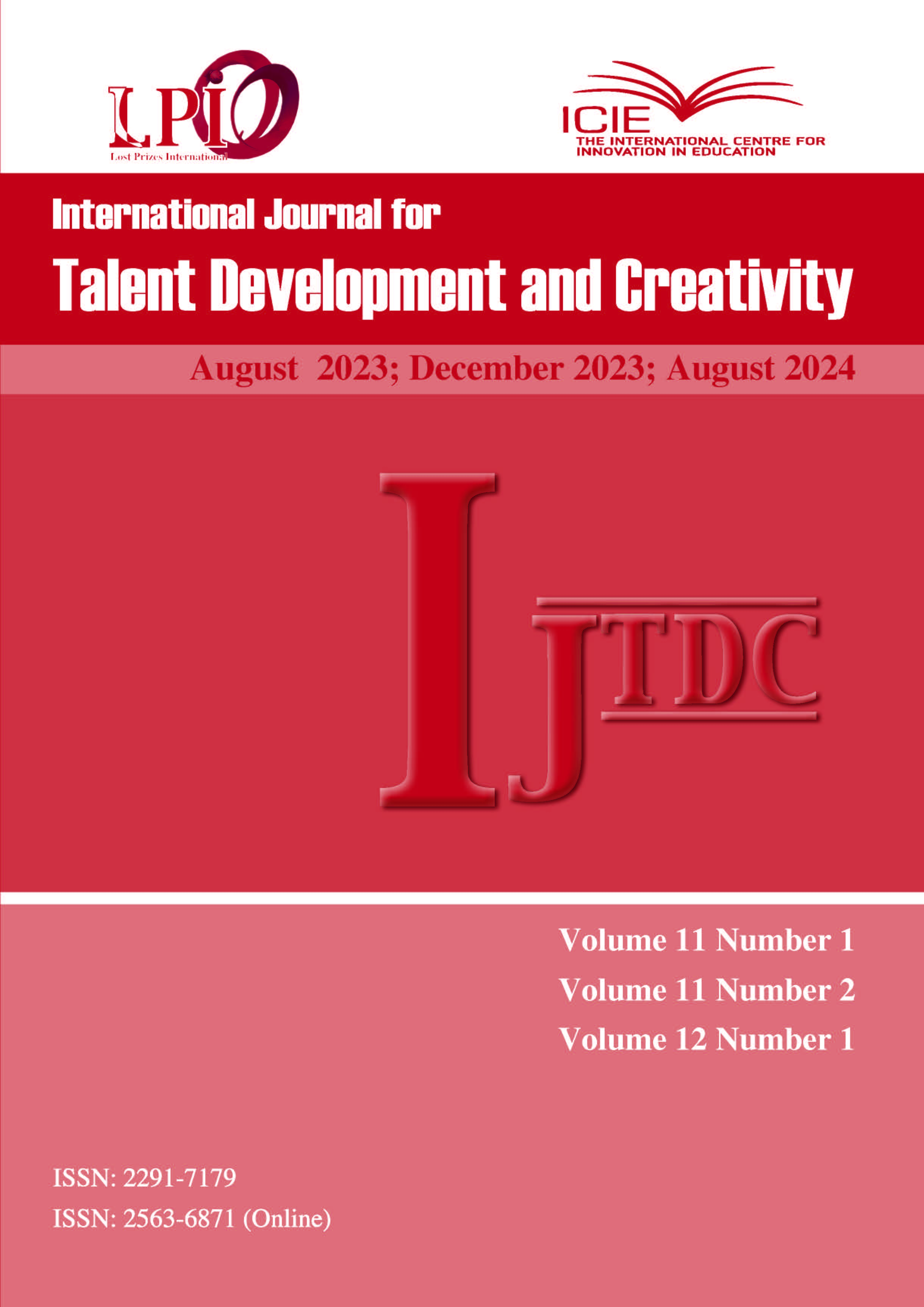Orientation Towards Symmathesy and Organizational Markers as Means to Cultivate Art Talent Environments: An Empirical Study Researching the Emergence of Talent Environments for Young Artists
Keywords:
Young artists, organizational markers, Symmathesy, talent development, talent environment, living systems theory, holistic ecological approachAbstract
This article presents a study on the development of art environments for young talented artists across 4
municipalities in the western part of Jutland, Denmark. Within this context and based on systems thinking, neosystems
thinking and a holistic ecological approach to talent development, the researchers identify and describe
three transcontextual art talent environments (Off-Track, Film, Show-up). Based on the neo-systemic concepts of
symmathesy (Together-learning), the pivotal point in this study, was to identify organizational markers in the
development of a strong talent infrastructure across the municipalities. This to enable and cultivate the artistic
potential of young people.
The research question of the study was: Which organizational markers cultivate the development of art talent
environments in the context of four Danish municipalities in the western part of Jutland?
The study is based on interviews with seven different public servants from different municipalities in the western
part of Jutland and build on a prior research regarding young artists within different artistic fields and their
instructors.
Through a generic thematic analysis, four organizational markers were identified (organizing, strategizing,
license to operate, and creative places). The paper argues that an orientation towards environments as a
symmathesy and towards organizational markers can help organizations improve artistic talent environments
across municipalities. Further, the role of public servants as talent stewards is discussed in the discussion.
Downloads
Published
Issue
Section
License
Copyright (c) 2024 Nikolaj Stegeager, Jakob Nørlem

This work is licensed under a Creative Commons Attribution-NonCommercial-ShareAlike 4.0 International License.

